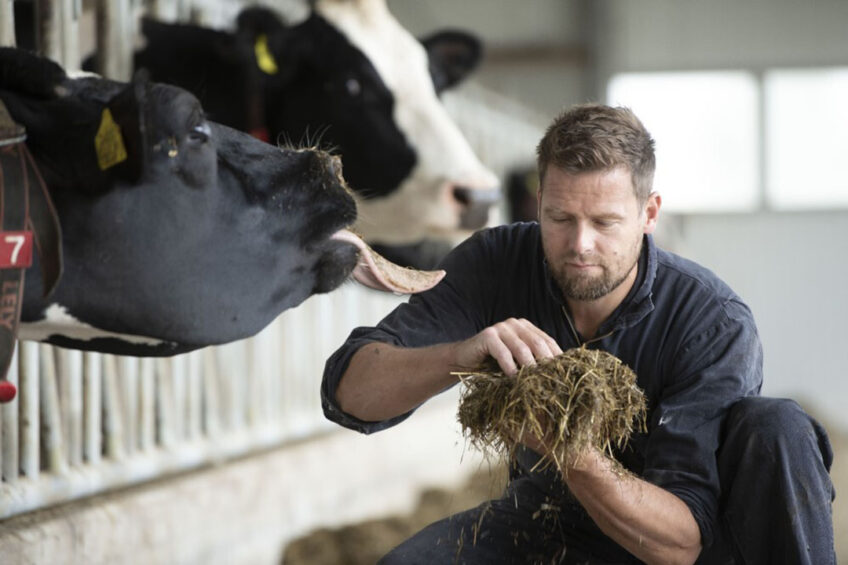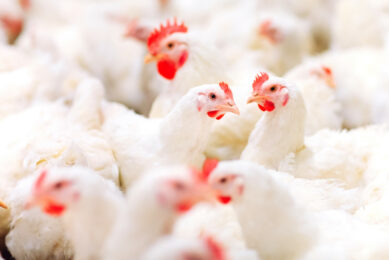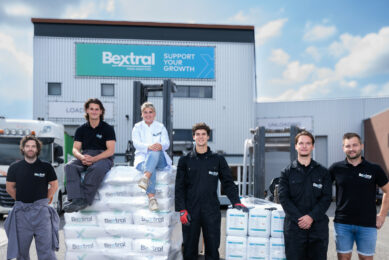The value of nutraceuticals in dairy farming

The consumption of dairy products is seeing an upward trend, especially in developed countries. In 2020, EU dairies processed almost 150 million tonnes of raw milk (cows, ewes, goats and buffalo), with two-thirds of all whole milk used for the production of cheese and butter. Meeting global demand is vital, and precision feeding is increasingly important. Here, we take a look at nutraceuticals and their value.
Precision livestock feeding is among the highest priority topics concerning agriculture and the animal feed industry. Dairy farming has evolved in many aspects, including genetics, housing and equipment, market demand analysis, consumer awareness and purchase behaviour, procurement and logistics, food biosecurity, branding and marketing and business financials.
Although the animal nutrition industry has reached very good levels of supplying farms with nutritional solutions, improvement of cows’ genetic value continues to challenge dairy farmers and nutritionists. This is because further applied nutrition is needed due to increasing milk yield followed by increasing nutritional and welfare requirements. In addition, the challenge is to shift this productivity under environmentally aligned strategies to promote sustainability.
It is well accepted that on-field response, economic return and research availability of feed additives have successfully altered productivity and farm efficacy mainly due to reduction of metabolic diseases, improved reproductivity and other health-related indexes. Feed additives are feed ingredients that can have a desired animal response role (other than their nutrient role) such as pH shift, growth or as metabolic modifiers (Hutjens 1991). Their importance is under increasing and continuous global attention as more and more companies invest in supplementary additive feeding development, rather than pharmaceuticals.
A number of studies have shown that several feed additives can have a ‘nutraceutical effect’ by improving cows’ longevity, lowering energy and protein waste and decreasing environmental footprint due to minimising excretion of undigested nutrients and carbon (Sirohi et al. 2010, Cannizzo et al. 2012, Pan et al. 2016, Veena et al. 2018, Mobeen et al. 2019).
Why are nutraceuticals so important?
A nutraceutical is any nutritional additive, concentrate, metabolite, constituent, extract and/or combination thereof used to manipulate production potential while limiting occurrence of metabolic diseases. Several studies focus on processed feed ingredients and their use as nutrients and dietary supplements. Such ingredients are dietary fats and fibres, functional peptides and amino acids, pro and prebiotics, polyunsaturated fatty acids, vitamins and trace elements, antioxidants and active compounds from herbs (phytobiotics).
Nutraceuticals, in addition to their nutritional value, could work as a catalyst for nutritionists under several different circumstances in the livestock production cycle, to control (re)productivity, farm efficacy and farm financials.
The higher the genetic potential of an individual cow, the higher the risk of metabolic disturbances.
Considering animal welfare is a must for premium dairy products, dairy nutritionists worldwide should be able to advise further on the valuable and multifunctional effects of nutraceuticals, including their antioxidant, anti-inflammatory, antimicrobial and cell survival effects for several tissues. The complexity of their effects in cows’ physiology should promote future studies for their use and role in modern dairy farming.
Multi-targeted use
The dairy production cycle can be described by a number of metabolic, endocrine, physiologic, immune, reproductive and behavioural adaptations. The higher the genetic potential of an individual cow, the higher the risk of metabolic disturbances. Metabolic disorders and reproductive dysfunctions consequently affect return on investment per cow, with balanced rations being the only preventive solution nutritionists still have to offer.
Nutraceuticals’ potential is cumulative and supportive in dairy rations for the metabolic activity of the rumen, liver, mammary glands and gut as well as their indirect role in the immune system. To understand their value, we simply need to evaluate the challenges and benefits of precise use of certain combinations of feed additives in crucial periods of the production cycle of cows.
The perinatal period in dairy farming can be described as a complex transition from one phase to the next. From a physiological point of view, the balance and flow of nutrients can determine cows’ susceptibility to pre and post-partum diseases. Any potential metabolic risk can lead to lower colostrum quantity and quality (lower calcium and immunoglobulins levels), lower milk production, higher immunodepression and higher calving-to-conception intervals.
A healthy gut
Of course, and prior to this, we need to set the basics with the establishment of rumen microflora and healthy gastrointestinal tract as a result of optimum and balanced dry matter intake from forages to concentrates ratio. To achieve that, several additives could possibly work in that direction, including rumen-protected amino acids, glucose precursors (i.e., glycerine, propylene glycol), pH modulators, yeast-based products and appetite promoters that alter epithelium functionality, forestomach mobility and osmoregulation.
There is no doubt that optimum forage-to-concentrates ratio contributes to lower environmental impact as less nitrogen and methane are lost through metabolism.
It’s only recently that the EU approved a methane-reducing feed additive in a trial to support a lower carbon footprint from dairy farming. In addition to that, we know that certain vitamins and minerals functioning as nutraceuticals regulate oxidative stress. Cows with high productivity require additional supplementation of rumen-protected B vitamins (biotin, niacin, choline). What is more, Vitamin A enhances cellular resistance to pathogens, and its pro-vitamin β-carotene increases the antibacterial activity of leukocytes (Von Lintig and Vogt et al. 2004), improves conception rates and lowers cases of ovarian cysts and placental retention (Kaewlamun et al. 2011).
Vitamin E functions as an antioxidant, maintaining cell membrane structure but also regulating immunoglobulin production (mainly IgG) and reducing somatic cell count. Sufficient overall vitamin nutrition is of utmost importance, especially in some regions where heat stress is a major issue for dairy farming.
Dihydropyridine (DHP) lowers cytoplasmatic calcium levels (inhibits absorption) and has antioxidant ability while also regulating rumen microflora. Cows fed with DHP under heat-stressed conditions are found with lower superoxide dismutase (SOD), glutathione peroxidase (GSH-Px) and catalase (CAT) (Yu et al. 2020). Oxidative stress may occur in cases of liver dysfunction (lower methyl-donor supplementation – Betaine) and gut inflammation, promoting anorexia.
The key behavioural signal from cows remains sufficient dry matter intake. Yeast-based products containing multiple vitamins, polyphenols (resistant to rumen microbial degradation) and β-glucans can support gut inflammation to increase mucosal immunity and plasma IgG levels (Yuan et al. 2015). Active compound mixtures from several herbs can lower somatic cell count and substantially decrease milk pathogens, including Staphylococcus agalactiae, S. aureus, streptococci and Escherichia coli (Kraszewski et al. 2008).
In conclusion
Profit margins in dairy farming are continuously being squeezed as production costs rise faster than milk prices. In an effort to overcome that, farmers are breeding cows with higher genetic potential. This practice is understood, but we need to also reconsider the expansion of the nutrients supply gap due to inadequate rations and underfeeding of feed additives during certain periods.
In this era of strict legislation when it comes to antibiotic use in the herd and the focus of consumers on animal welfare, the industry needs to reconsider the use of nutraceuticals in dairy farming. More studies will test the improvement of physiochemical milk parameters after the use and effect of nutraceuticals on milk yield.
Join 13,000+ subscribers
Subscribe to our newsletter to stay updated about all the need-to-know content in the dairy sector, two times a week.










